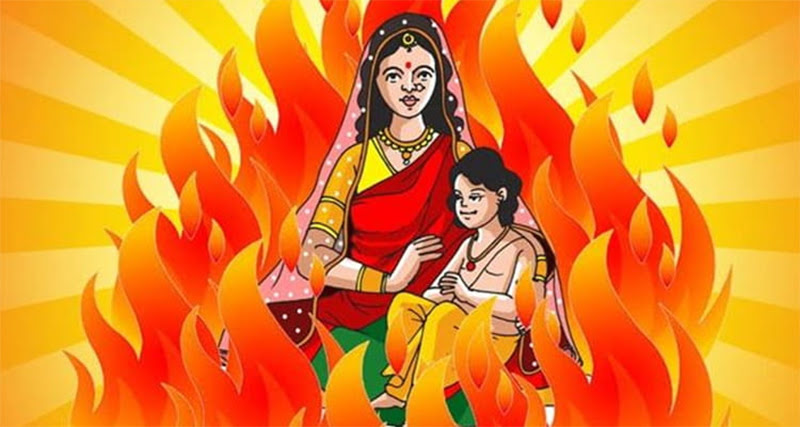Each spring, people across India and all over the world praise the Hindu celebration Holi, tossing hued water and powders on each other in upbeat festival. On this one day the full-moon day of the Hindu month of Phalguna — societal rankings like standing, orientation, age, and status are shunned in the soul of making cheerful together, and everybody is fair game to be drenched with variety. In many spots in India, a large pyre is lit on the prior night Holi to commend this event.
History of Holi
Holi’s customs shift all through the nation and have their foundations in Indian folklore. In many spots the celebration is related with the legend of Hiranyakashipu, an evil spirit ruler in old India. Hiranyakashipu enrolled the assistance of his sister, Holika, to murder his son, Prahlada, a committed admirer of Vishnu. While trying to consume Prahlada, Holika sat with him on a fire while wearing a shroud that shielded her from the fire. However, the shroud safeguarded Prahlada all things considered, and Holika consumed.
Read More:-
What is Holi Festival?
In the bouquet of Indian festivals, Holi is the festival of colors, the celebration of affection holds a special and a unique charm, giving a superb event for getting a charge out of with precious ones, mostly, the festival symbolizes about recognizing the triumph over evil. Holi has a long practice in India and that is the reason Holi is commended in India. This incredible festival is praised with much walk and intensity. In the variety world, the celebration gives a brief look at its uncommon energy and tasks out a magnificent show of diverse hues.
Story of Holi Festival in India
The festival of Holi in India connotes the appearance of spring, the end of winter, forget and forgiveness and helps in building broken relationships. Holi begins the evening of Purnima (full moon day) in Vikram Samvat (i.e Hindu Schedule month of Phalguna). The celebration is commended in two ways, Holika Dahan or Chhoti Holi and Dhuleti, Dhulandi or Phagwah. The festival begins the prior night Holi with Holika Dahan where strict ceremonies occur before the bonfire.
Why do We Burn Holika?
Holika Dahan is propitious piece of frolic festival Holi.” Holika “sister of the king of devil” Hiranyakashipu” portrays the evil inside you, Dahan implies submission to big and eternal power. As per Indian folklore, Holika was weakened by Master Vishnu in the fire when she was attempting to consume and hurt Prahlad ” (aficionado of Ruler Vishnu). Consequently consistently Indians from one side of the planet to the other, consume likenesses of HOLIKA in type of some old trunk and stick and consume it at the edge of the road, delineating the accommodation of detestable inside them In holy fire.
Read More:-
United Nations Public Service Day
Holi Celebration
As per the Hindu folklore of Bhagavata Purana which uncovers all the Holi celebration history, Hiranyakashipu was the ruler of evil Asuras and had procured a shelter which made him gain five exceptional powers. He requested that everybody love just him. Yet, his child, Prahlada differ and dedicated Ruler Vishnu. Rankled Hiranyakashipu gave brutal disciplines lastly Holika, Prahlada’s shrewd auntie fooled him into sitting on a fire with her.
Holi Some Facts
Individuals likewise trust about the Hindu god Krishna, for which Holi is called Rangpanchami in recognition of the heavenly love of Radha. The brown complexion of Krishna generally lost hope about his resemblance of young ladies towards him for which his mom requested that he approach Radha and variety her face with the variety he wants. From that point forward, the shading of Radha’s face came to be Holi. This is the main reason for observing Holi.
The Colors in Holi Represent
Despite the fact that celebrating the celebration is normal yet the mode and the conventions of celebrating fluctuate with the variety of spot and districts. Be that as it may, the most widely recognized practice noticed and followed is involving ‘Gulal’ or colors as dry powder. Holi is a celebration of varieties. Indeed, even watercolors are being utilized. ‘Gulal’ is the nearby language a huge piece of the festival is specially designed variety readiness from different fixings. Such parts have changed after some time.
Read More:-
Final Words
Holi, the vibrant and joyous festival of varieties, is perhaps of the most celebrated festivals in India and across the globe. Steeped with rich cultural history and mythology, Holi is significantly more than simply a celebration where individuals smear tones on one another. It represents the triumph of good over malevolent, the appearance of spring, and the encouraging of solidarity and fraternity among networks. How about we dive into the dazzling history, legends, importance, and customs of Holi.
